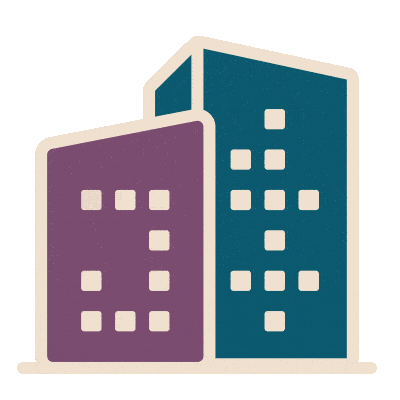WELL Story: Zach Craun, Associate, Cookfox Architects
How did you get involved in the WELL building movement? What personal/professional significance does it have for you?
I discovered the WELL Building Standard through my studio, COOKFOX Architects, which I joined in 2012 because of its mission to create healthy and sustainable buildings for people to live and work in.
For the past 5 years, I’ve been leading our Green Team, which works to create a more environmentally sustainable studio, not only in our work but in our day-to-day lives in the studio. We host discussions and in-house presentations, assist studio members with WELL and LEED accreditation, craft operational and maintenance policies, invite guest lecturers to share with our studio, spearhead the studio’s AIA 2030 commitment and organize educational trips and events. Among other things, we joined a community-supported agriculture program and began composting the food scraps from our kitchen. On Earth Day of 2016 we began what has become an annual tradition of a Day of Service, providing support to other organizations in the New York City area whose work aligns with our studio’s mission.
Our previous studio was the first LEED Platinum project in New York State and explored multiple facets of biophilic design – connecting people with nature. When we had the opportunity to design our new space, we wanted to continue our investigation of biophilia and pursue the LEED rating system, but we were also thinking, what’s next for the building industry? How can we continue to improve?
When we studied the WELL Building Standard, we saw that it is something that really aligns with what we’ve been doing internally for a long time and something that we think could be a positive next step for the design and construction industry — focusing on how the design, construction and operations of a space can measurably affect the health and wellness of its occupants.
Would you say that health and sustainability are things you pursue in your own life?
I have a 20-month old daughter and she is my first child. I think the really impactful thing for me about the WELL Building Standard in my personal life was that it made me aware of how to improve my home’s environment for her. While taking the WELL AP Exam and helping our new office to obtain WELL Certification at the Gold level, I learned about what constitutes a healthy product or an unhealthy product and why; what goes into our building materials and what are considered safe levels, how to quantify water quality, air quality, the measurable benefits of organic food. Learning about WELL has brought a heightened sense of how to provide a healthy environment for my daughter; getting frequent access to nature, making sure we are eating healthy food, being mindful of acoustics, improving air and water quality, as well as reading and understanding the various labels. So I’d say that the big takeaway from the WELL Building Standard beyond architecture is how I care for my family.
From a health and wellness perspective, what are some of the most inspiring or exciting trends you’re seeing in the corporate wellness/buildings industry?
For me, the most exciting trend is towards a heightened awareness of what goes into building materials. The organic movement did a lot to enhance the conversation around food because people started discovering what was going into their food and the effect it was having on them and the environment. People had the information they needed in order to make healthy choices. We’re now starting to get better and better information on building materials; not only what goes into them, but how that impacts the health of building occupants along the entire supply chain and the planet. It’s all about empowering people so they can make the right choices.
The other exciting trend is that we are seeing the beginning of smart systems which control air quality, acoustics, lighting and other environmental aspects that affect health and wellness. Take lighting; new LED technology can shift color temperatures and tie into daylight and occupancy sensors - you can now start to fine-tune lighting not only to be healthy and productive to work in, but also not to be as energy-consuming as it once was. Similarly, with mechanical systems we’re starting to get better and better real-time feedback. For example, at our office we change the amount of fresh air being supplied in our space based on CO2 monitors which are tied into the system. The building industry is becoming more of an internet of things, if you will, and it’s making for healthier and less energy-consumptive environments.
What does the future of WELL and the healthy buildings movement look like, from your perspective?
I would say the future of WELL and the healthy buildings movement aligns with our company’s mission of biophilia, connecting people to nature. Because I think healthy buildings need to exist as part of our environment. They need to sustain life beyond just the occupants of the building. They need to sustain the life of the community within which they sit. We need to ask, what can our buildings do for us? Can they be net positive? Can they filter air for the city? Can they generate electricity for themselves and the couple blocks next to them? Aside from being good unto themselves, how do they start to work at a larger scale? I think that’s the future of the healthy buildings movement: for our buildings to start creating an ecosystem of their own.
How does the WELL AP support your career goals, and your work as a leader in the healthy buildings movement?
My life and career goal is to leave the world a better place than I found it. Our clients come to us with goals and problems and we help advise them, sometimes bringing things to the table that they’re not aware of but that might be beneficial for them to consider. So in that regard I think being a WELL AP is helpful because it allows me to bring a level of expertise about health and wellness design to the conversation.
Have you found anything that you learned from WELL to be helpful in your work on the Green Team?
Yes; most immediately our sustainability team has been tracking our WELL policies, such as changing out the air filters, conducting water quality testing and making sure the cleaning policies are adhered to. I think more importantly, we’ve been sharing the results with the rest of the studio along the way, which I think has had an impact – there seems to be a heightened awareness about the health and wellness and it how to improve upon it. Recently, we conducted our post-occupancy survey and it has been really interesting to see how the design intent and impact differ. We’re now working to make adjustments and refinements to our studio and its policies to ensure that our coworkers are as effective and healthy as they can be.
Do you have any favorite healthy buildings that you’ve worked on, or any elements that feel particularly important to you?
Currently, I’m working on a power plant in Salem, Massachusetts and a condo in New York City, which are both pursuing healthy and sustainable goals. Footprint Power in Salem is a natural gas fired facility we designed to replace a coal fired powerplant. Just by that one move alone we’ll be taking more carbon dioxide out of the atmosphere, approximately 450,000 tons per year, than probably my life’s work. It translates to an annual CO2 reduction of removing 90,000 cars from the road. We also designed a berm around the plant that both acts as a sea-level rise and storm resiliency measure and as a park for residents to engage with the waterfront, which they’ve been disconnected from for the past 100 years. The administration building has been designed to LEED Platinum and can operate completely off the grid. The project in Manhattan is a 73-unit 330-foot tall residential building, and every single unit has access to its own private garden and outdoor space. The project is on track to achieve LEED Gold and we’re considering pursuing WELL. We’re also keeping and restoring the historic building base, which was constructed in 1888. I think preservation is an important aspect of sustainability. The greenest building is the one that already exists.







